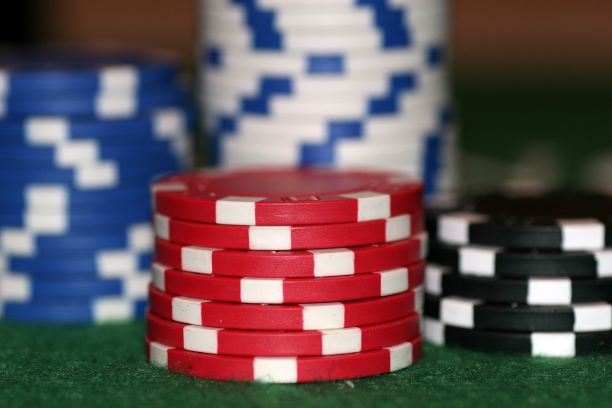Heads Up Poker, What is it?
Heads up Poker is perhaps the purest kind of poker game and considered one of the most lucrative kind for professional players.
Its template implies that you’re going to play the blind each hand, so you’re going to play LOTS of hands. In certain situations, 100 percent of the hands are being dealt with.
This offers a professional player the chance to enforce their skills for each hand against weaker players, which would offer higher winnings than 6 max as well as the full ring games.
#1 Understand the Goal
Heads up poker requires two players competing. This is usually a fun, pleasant game and encourages people to think quickly.
This can be played as a Texas Hold’em, Five Card Stud, Seven Card Stud, Omaha Hi or Omaha Hi-Lo.
The goal of this type of poker game is to be the finest player with a strong hand and also to take the jackpot home.
Whatever poker game you choose, it’s helpful to learn and practice as much as you can.
Visit various websites that provide poker tricks, programs, and tactics to understand the rules and the proper way to succeed.
You may also join online poker classes, which are available free of charge on several major poker & casino pages.
#2 Be Selectively Aggressive
Another approach in heads-up play is to become more aggressive and keep betting and raising the opponent’s bets.
Admittedly, when playing heads up, many players have become much more directly aggressive and would end not acknowledging the board and the potential hands which their opponents seem to have.
The above tends to lead to a scenario where the player wins a bunch of small pots with the offensive play but somehow loses big against the opponent with a strong hand.
Which is why you need to be selectively aggressive all through the heads up poker game.
You will have to use your ability to read and analyze the variety of hands your opponent has, then learn when to be offensive and when to pull back.
The goal is to continue to win all those small pots and big pots, but also to prevent the big hit, from falling trap into your opponent’s tactics.
They might be using your aggressive strategy to throw you right into your hand if especially you’re holding very strong. This takes a lot of focus and understanding of the game and the possible scenarios and hands you may have.
#3 Your Position is Your Advantage
Take advantage of your position in the game. A player who becomes the last to play after the flop has all the advantage of having the most info about his or her opponent before they have to bet and raise.
This is very useful in evaluating the motives of their opponent until they have to make a choice. Certainly, a major advantage as compared to the player who acted first but with minimal information available.
Then use this for your advantage by exerting pressure on your opponent, who has limited details for the first time, to make him even more uncertain.
This can be a real mindset spiel in heads up poker play, and you must know how to leverage the details you give out.
This is all about pushing an agenda and getting your acts in line with your narrative. You need to be able to persuade your opponent to do the actions he is supposed to do and you will become a powerful threat for others to meet.
It may be a little bit clever, but once you learn the art it could be a great benefit on your part.
#4 Bluffing Your Opponents
While playing heads up poker, it is much easier to bluff. You can make your opponent think you have a strong hand and that his hand is not worth playing.
Often it’s important to read your opponent as well as know what they’re going to draw.
If you personally think they’re having trips, and there’s a possible flush on the board, just go right ahead and bluff them.
But, just try to ensure you place a bet of the appropriate size.
#5 Concept of Outs and Odds
Any player in Texas Hold’Em needs to have his head wrapped around the idea of outs and odds. If you go for a hand, the outs will be the cards left in the deck which will finalize your hand.
For instance, when you are one card away from getting a flush, this means that you will have two in your hand, and there will be two on the board, then you’ll have 9 outs.
This will be calculated based on the complete number of clubs, which is 13, subtracting the number of clubs being shown, which would be 4. After the flop, the 9 outs have 35% post-flop and 20% after the turn. The figure is around 3:1 and 5:1.










